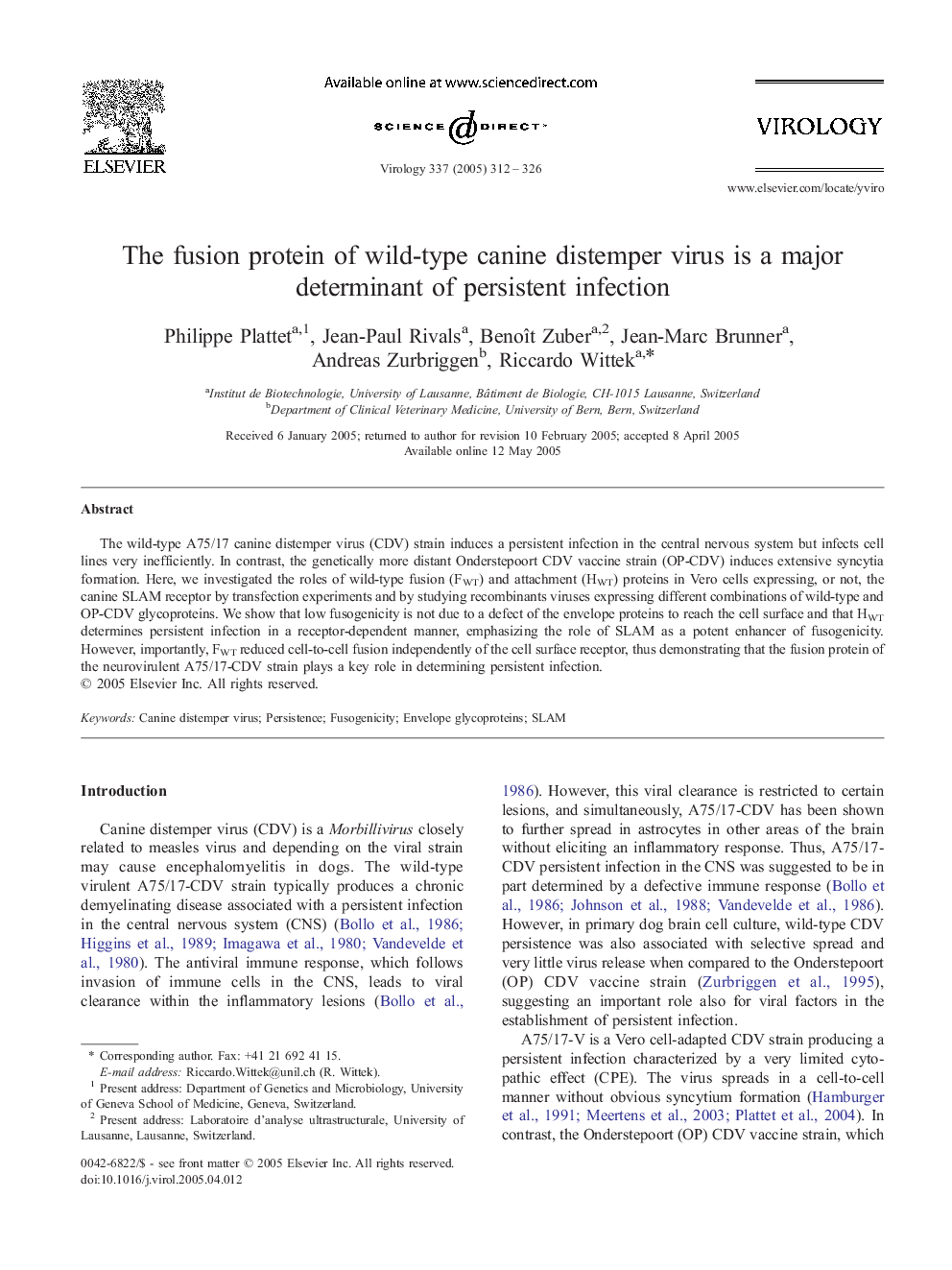| Article ID | Journal | Published Year | Pages | File Type |
|---|---|---|---|---|
| 9288221 | Virology | 2005 | 15 Pages |
Abstract
The wild-type A75/17 canine distemper virus (CDV) strain induces a persistent infection in the central nervous system but infects cell lines very inefficiently. In contrast, the genetically more distant Onderstepoort CDV vaccine strain (OP-CDV) induces extensive syncytia formation. Here, we investigated the roles of wild-type fusion (FWT) and attachment (HWT) proteins in Vero cells expressing, or not, the canine SLAM receptor by transfection experiments and by studying recombinants viruses expressing different combinations of wild-type and OP-CDV glycoproteins. We show that low fusogenicity is not due to a defect of the envelope proteins to reach the cell surface and that HWT determines persistent infection in a receptor-dependent manner, emphasizing the role of SLAM as a potent enhancer of fusogenicity. However, importantly, FWT reduced cell-to-cell fusion independently of the cell surface receptor, thus demonstrating that the fusion protein of the neurovirulent A75/17-CDV strain plays a key role in determining persistent infection.
Related Topics
Life Sciences
Immunology and Microbiology
Virology
Authors
Philippe Plattet, Jean-Paul Rivals, Benoît Zuber, Jean-Marc Brunner, Andreas Zurbriggen, Riccardo Wittek,
